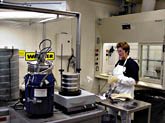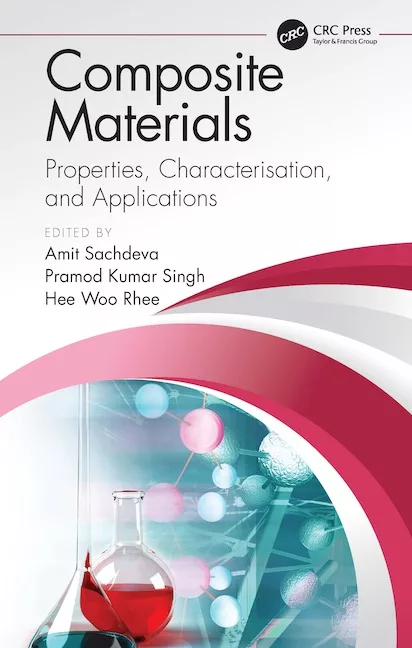Untapped Potential
 Credit: Wacker Silicones
Credit: Wacker SiliconesAll that's needed, says Wolfgruber, is persuasive selling of the attributes of silicone-containing exterior architectural paints -- and a realization by coatings formulators and manufacturers that these paints can provide superior long-term performance in exterior masonry applications.
"You get the benefits of the silicone resin -- basically its water repellency -- while at the same time it is permeable" to water-vapor transmission from the substrate, Wolfgruber said during a recent interview at Wacker's North American headquarters in Adrian, MI.
Silicone resin emulsion paints -- where the binder system is typically a combination of silicone and other latexes such as acrylics or styrene acrylics -- offer durability and performance advantages over what Wolfgruber termed a "closed" paint film that may resist outside moisture, but degrade due to a barrier effect that blocks the escape of water vapor from inside the substrate. Such a closed film "sooner or later will fail in some area -- it will crack or blister," he said.
"A silicone resin emulsion paint will not crack or blister. The moisture comes out."
Expanded use of silicone resin emulsion paint, or "SREP" as it is being marketed, is a top priority for Wacker Silicones Corp., the North American silicones business of Wacker-Chemie GmbH of Germany, and for Wolfgruber, the silicones business's president and CEO. Also high on the list of goals for the business is the growth of markets for innovative silicone-based technologies such as the company's new "HELICONE HC" apparent color-shifting pigment products (See PCI, August 2001).
In addition, the company earlier this year opened a new R&D laboratory at the Adrian complex -- the Global Powder Coating Competence Center -- as part of an effort to boost silicone applications in the fast-growing powder segment.
As Wolfgruber sees it, these moves to expand the use of silicones in coatings reflect a long track record of technical innovation on the part of Wacker Silicones and parent company Wacker-Chemie, based in Munich.
"What sets us apart is that Wacker has always been a very technology-driven company," Wolfgruber said.
Focus on Differentiation
In seeking to expand coatings applications, Wacker Silicones looks to zero in on the benefits of product differentiation. He points to the case of silicone resin emulsion paints, which are touted as a high-performance alternative in the exterior masonry-coatings segment.Currently, silicone resin emulsion paints for masonry applications barely register on the architectural-coatings segment radar in the United States, where they are relegated to niche status. Pointing to Wacker's experience in the European coatings market, Wolfgruber believes such paints can grab a bigger market share here.
"In Germany, 25% of all exterior architectural paint is silicone resin emulsion," he said. "This is not a niche; this is a mainstream technology, and the system continues to enjoy significant growth and acceptance in other parts of Europe and in Asia."
A common formulating approach with such paints is the replacement of a measurable portion of the latex paint resin with silicone emulsion, resulting in a combination silicone-styrene acrylic or silicone-acrylic system, for example.
In addition to their well-documented water-resistance capabilities, silicone resin emulsion paints also provide UV resistance and offer "a certain degree of self-cleanability," Wolfgruber said.
For evidence of the long-term durability prowess of silicone-containing architectural paints, Wacker representatives point to the selection of such materials by historic-preservation experts concerned about long-term protection. The exterior of the U.S. Capitol building is mentioned as a high-profile showcase for the performance attributes of silicone paints.
One factor in the discrepancy between the use of silicone architectural paints in Europe and the United States, of course, is the simple reality that masonry and stucco substrates are far more common in Europe. Wolfgruber, however, points out that the use of such construction materials is on the increase here, particularly in commercial construction.
One type of substrate appearing on a larger scale is the so-called "EIFS" or Exterior Insulation Finish System, Wolfgruber said. The material consists of exterior building panels that contain insulation under a stucco exterior, on which a topcoat is applied.
"The paint industry in the United States is very much set in a certain way; has certain beliefs and is slow to change." But Wolfgruber said he senses increased interest in silicone resin emulsion paints, mentioning that Wacker is involved in a development program with a "major paint company" that he declined to identify. He's confident that success there will be followed by adoption of the technology by other coatings companies.
The key to expanding such applications, he said, may lie in the effectiveness of marketing programs employed by the coatings manufacturers themselves. "They have to discover a concept of how it fits into their (paint) line. It will be higher priced than a lot of the dispersion paints. But there is a market."
Helping to stimulate more interest, he said, is the marketing success story of a German paint company that came out with an exterior silicone-containing paint product that boasts a self-cleaning feature. The product combines hydrophobicity with a surface texture that resists moisture and dirt pickup. Water or other liquid substances "cannot wet the surface," he said. As a result, rainfall "takes the dirt with it and runs off. It has been marketed very successfully," he said.
Wacker also has developed silicone-based formulations he calls "ultra-phobic," offering resistance to dirt, water, oil, and other substances. "In silicone emulsion paints we have a tremendous array of formulations and formulating strategies to get different effects."
Wacker, he said, "created" the market for silicone resin emulsion paints in Europe, and continues to be the market and technology leader for the silicone resins for those paints. "And we want to create the market over here in the States. This happens to be one of our big initiatives, and it's only a question of time. Sooner or later, something that is so good will, in the end prevail. But it will take time."
 Credit: Wacker Silicones
Credit: Wacker SiliconesPowder, Specialty Coatings Also Targeted for Growth
Other coatings segments targeted for expanded use of silicones include powder coatings, where Wacker supplies resins for a variety of specialty uses, notably for heat-resistant products. And the company continues to explore other new technologies and applications. One such area is anti-fouling marine paints, where the low surface-tension and release properties of silicones offer the potential for new, non-toxic ship-hull paints.Anti-fouling marine coatings, where copper or tin-based agents still represent the dominant technologies, present a promising -- but challenging -- market segment. The development process for new anti-fouling materials is particularly arduous, due largely to the daunting regulatory-approval gauntlet.
Still, Wolfgruber sees promise for silicones in the market, taking the view that the inevitable adoption of such technologies by a major marine-coatings manufacturer will generate a ripple effect, leading others to jump aboard.
Other established or emerging coatings markets for silicones are non-stick and specialty fabric coatings.
Commenting on the challenges posed by the coatings industry, Wolfgruber said coatings formulators look to suppliers such as Wacker for solutions and ways to deliver greater product differentiation and keep costs in line while meeting increasingly stringent environmental controls.
"They all look for either differentiation or the possibility of improved cost-benefit situations," he said.
Looking for a reprint of this article?
From high-res PDFs to custom plaques, order your copy today!







